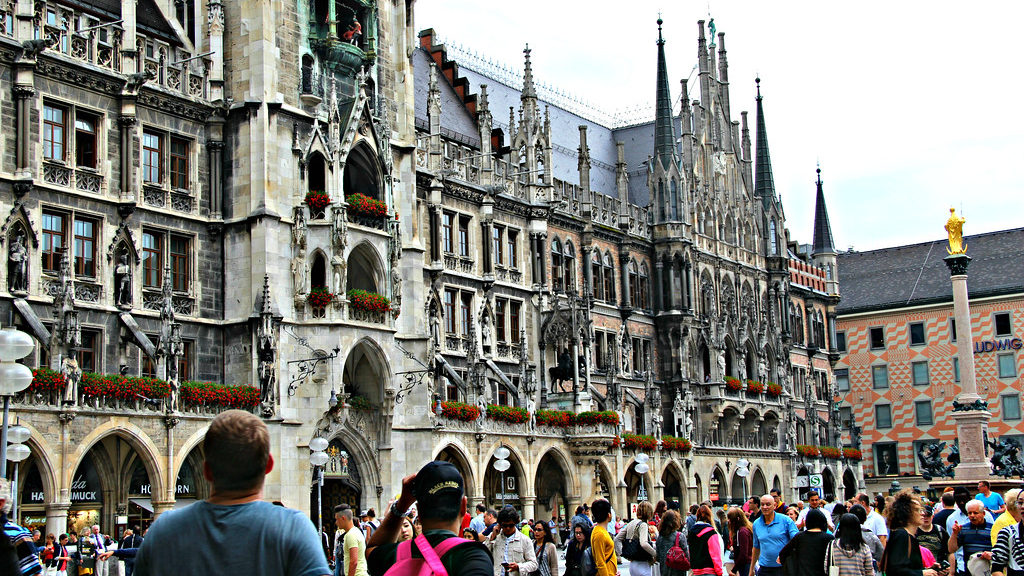
Munich
Munich is a very easy city to get around. The town square, Marienplatz, was within walking distance of our hotel. It has served as the center of Munich since 1158. Years ago, markets and tournaments occurred here. Today, it is a common gathering place and also the site of Christmas markets during the holiday season. The Mariensäule is a Marian column which was originally built in 1638 to commemorate the end of Swedish occupation following the Thirty Years’ War. A statue of the Virgin Mary is at the top of the column.
The Old Town Hall is depicted in the picture immediately below. In 1874, the city government left this building and moved into the New Town Hall (which actually looks older). The New Town Hall and Marienplatz are in the picture above the title for this blog and in the second and third pictures below. The mayor’s office, the offices of the City Council and other administrative offices are located in the New Town Hall. The Mariensaule is also pictured. The last picture is of the tower balcony of the New Town Hall where the famous Glockenspiel is located.
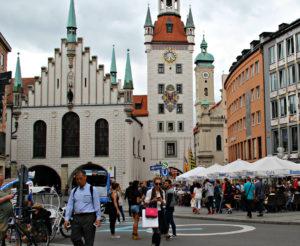

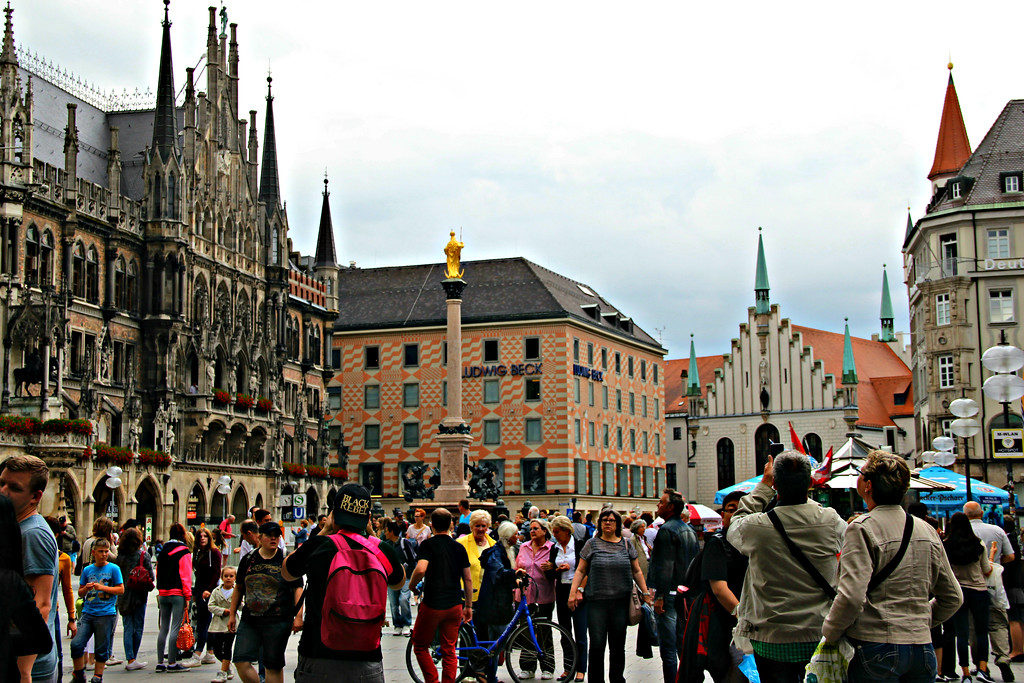


The next pictures are of the Glockenspiel. It plays at 11AM, 12 noon (in the summer) and 5PM. The Glockenspiel has 43 bells and 32 figures that rotate as the chimes play. The first picture shows both the top half and bottom half of the Glockenspiel. The top half (second and third pictures) portrays jousting knights in honor of the marriage of Duke Wilhelm V to Renata of Lorraine. The bottom portrays the coopers’ dance or Schäfflertanz. I found two stories related to the coopers’ dance. One story says that the coopers did this dance in honor of the end of the plague and another story says they danced to encourage the community as many still suffered from the plague.


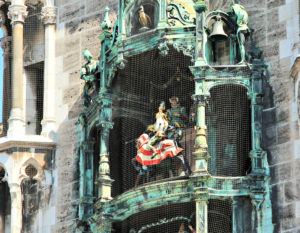
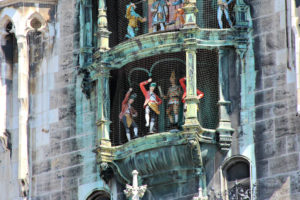
We took a city tour of Munich and saw two churches, one of which was the Theatine Church of St. Cajetan. Unfortunately, I could not get far enough away from the church to get a good exterior picture, but several pictures of the interior follow. The church was built in the 1600’s but portions were bombed during World War II. Restoration began in 1946 and was completed in 1955. The interior is primarily white stucco, and with its incredible columns, give the church a bright and open feel.

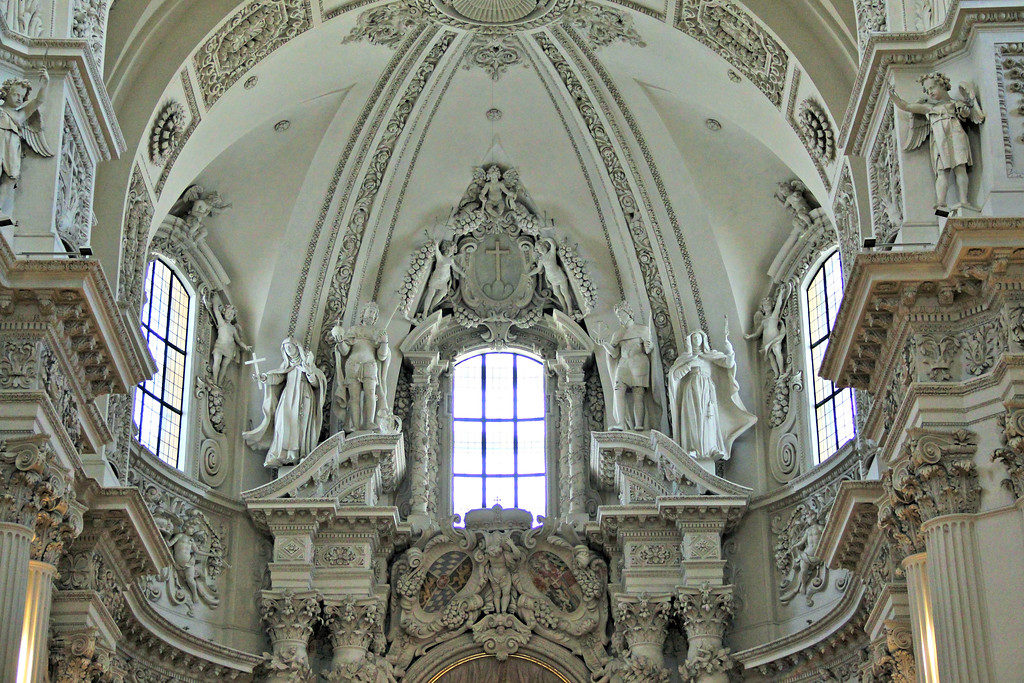
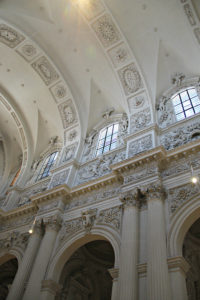
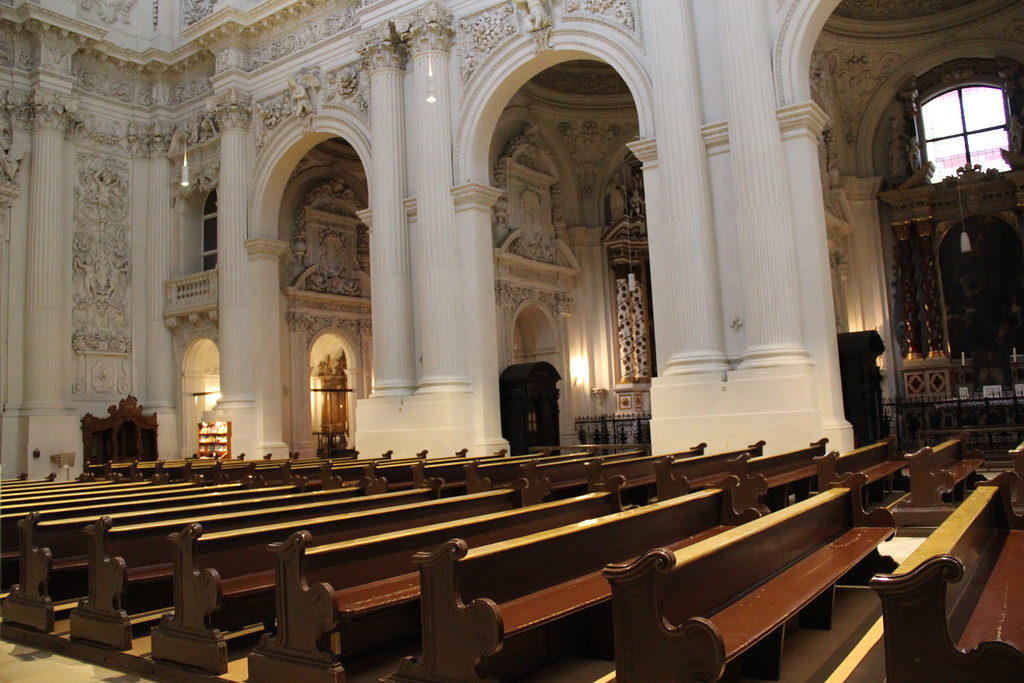
We also visited St. Peter’s Church. It was built on the site of a monastery dating back to the 8th Century. The original church, a wooden structure built in 1180, was destroyed by fire. It was rebuilt in the 1300’s but then nearly destroyed again during World War II. Reconstruction began in 1949. Some of the statues and paintings were spared from the bombings. The ceiling fresco is from the 1700’s and was restored in 1999-2000. The church has a tower which one can climb for views of Munich.
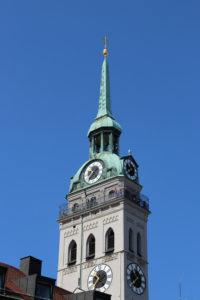

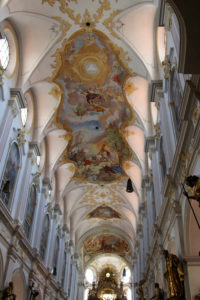
We visited several other sites on our city tour of Munich. Among these was the Munich Residenz. The buildings originally on the site date back to the 1300’s. The Residenz was a palace complex that served as both a residence for the royal family as well as government offices. Through the years there has been rebuilding and restoration, the most recent post-World War II. Today the Residenz is one of the largest museum complexes in Bavaria. In addition to the museums, there is a theatre, several courtyards (the Fountain Courtyard is depicted in the last picture), and the Court Garden.

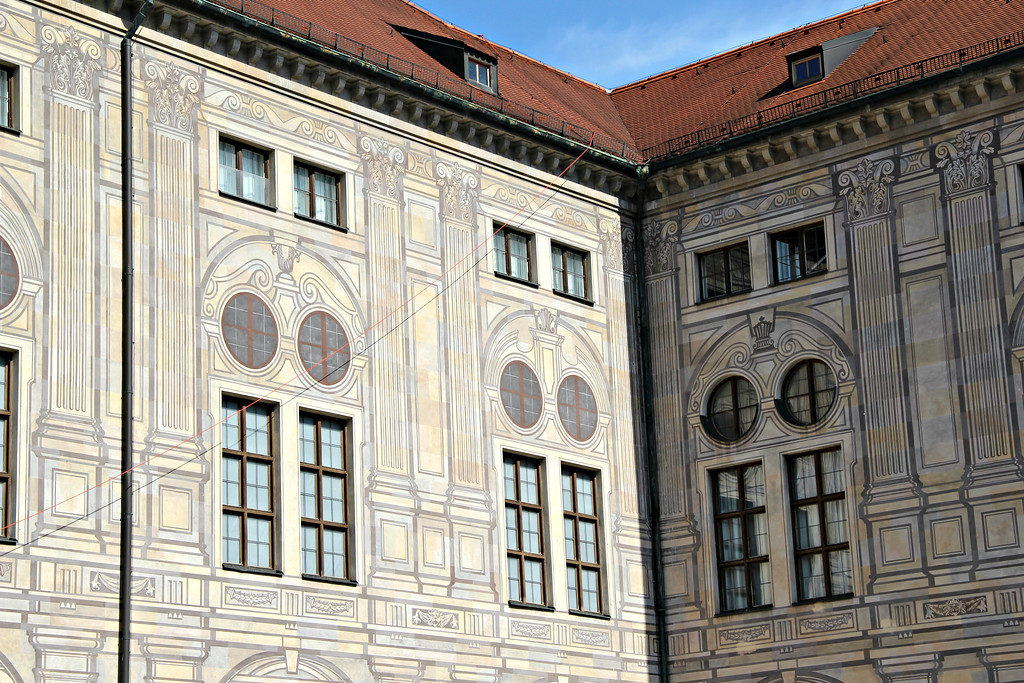

We also walked through a small portion of the Viktualienmarkt. It is a market covering almost five acres. Over 150 vendors sell flowers, food, beer, wine and much more. Viktualienmarkt comes from the word victus which means provisions or food. The first market stands are said to have appeared on the Marienplatz in 1807. Butchers can trace selling their meats even longer – to 1315. They have worked cooperatively and celebrated their 700th anniversary in 2015. The Vikualienmarkt attracted more and more merchants and patrons and it was moved away from the Marienplatz. The Vikualienmarkt was heavily damaged from bombings in World War II. It was rebuilt – now with permanent stalls and organized by the type of goods being sold. It includes a beer garden where people can enjoy Munich’s excellent beers as well as the food being sold. The Vikualiemarkt attracts local citizens of Munich, tourists, and even professional chefs. The pictures below are of a sign celebrating the butchers’ anniversary (it is translated Butcher Line, 700 Years), one of the meat markets, a wine shop and an area where patrons can enjoy food and drink.

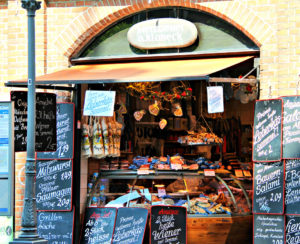


We had lunch at the Hofbrauhaus. It has a long history, both as a brewery and tavern. It was nearly destroyed when Munich was bombed in World War II, although part of the beer hall survived. Restoration work was completed in 1958. It is frequented by both locals and tourists. I have included a picture of the exterior, the beer hall on the first floor, an open-air area where we had our lunch and a picture of our beer in Hofbrauhaus glasses.
On another day, we had lunch at the Ratskeller. Its history can be traced back to 1874. It is located in the basement of the New Town Hall. The interior includes little nooks for intimate dining – it is hard to believe there is seating for over 1,000 plus outdoor seating in the Prunkhof, which is the main courtyard off Marienplatz. We enjoyed traditional Bavarian fare at the Ratskeller.

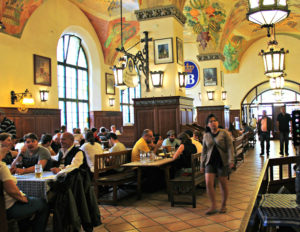
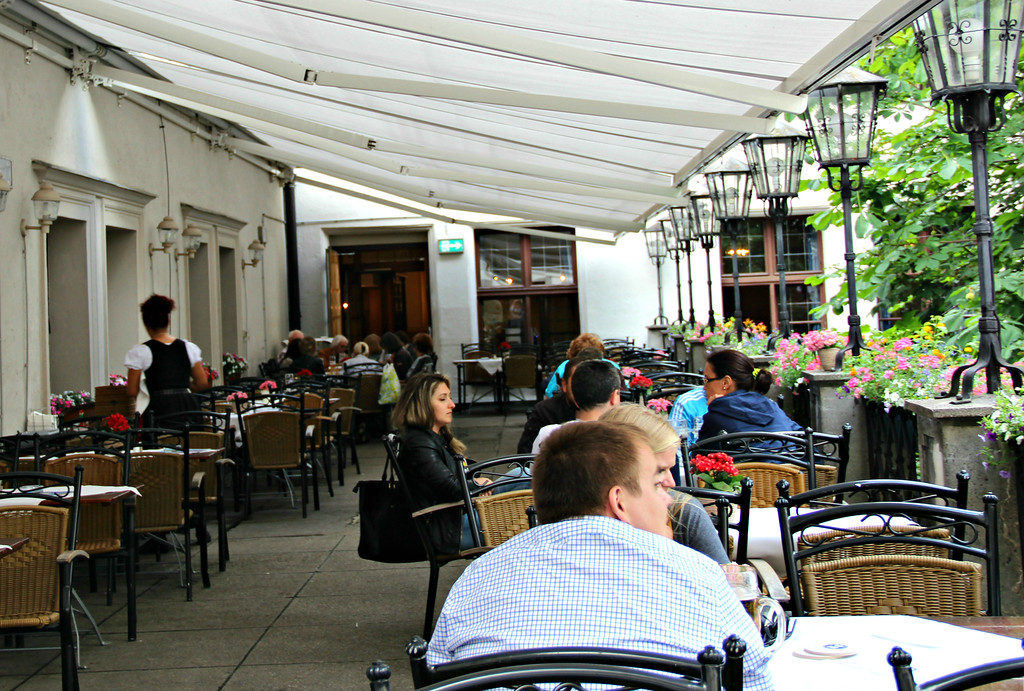

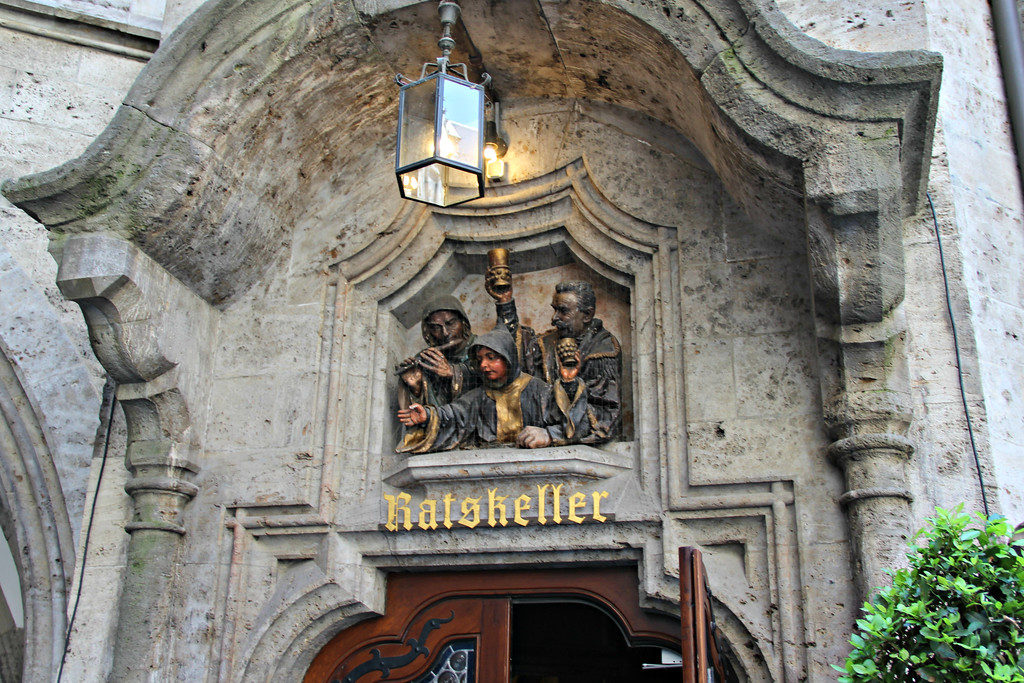
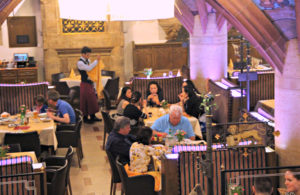
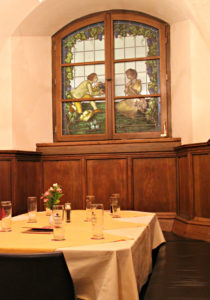
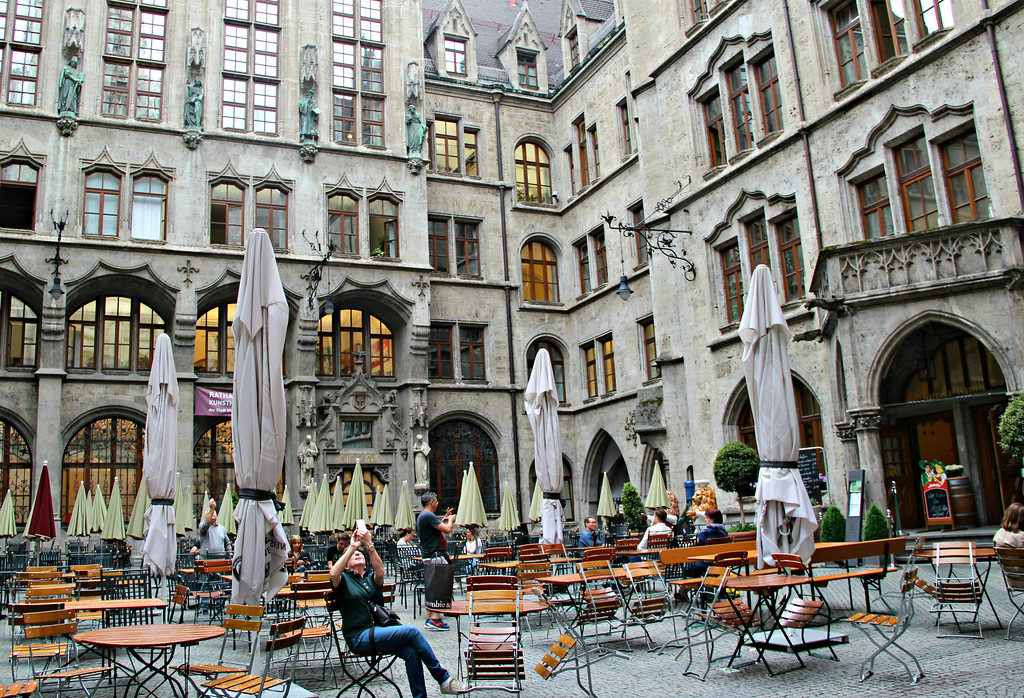

If you are looking for gifts while you are in Munich, I will share that we had very good luck at Max Krug. They have a website where you can get current information about the shop. It was within walking distance of the Marienplatz. They had a wide variety of things including cuckoo clocks, beer steins, wood carvings and Christmas ornaments. They also shipped our purchases to our home so we didn’t need to pack them and risk breakage while we were traveling.